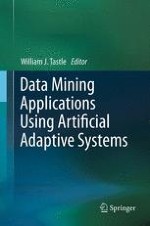2013 | OriginalPaper | Chapter
5. Meta Net: A New Meta-Classifier Family
Authors : Massimo Buscema, William J. Tastle, Stefano Terzi
Published in: Data Mining Applications Using Artificial Adaptive Systems
Publisher: Springer New York
Activate our intelligent search to find suitable subject content or patents.
Select sections of text to find matching patents with Artificial Intelligence. powered by
Select sections of text to find additional relevant content using AI-assisted search. powered by
